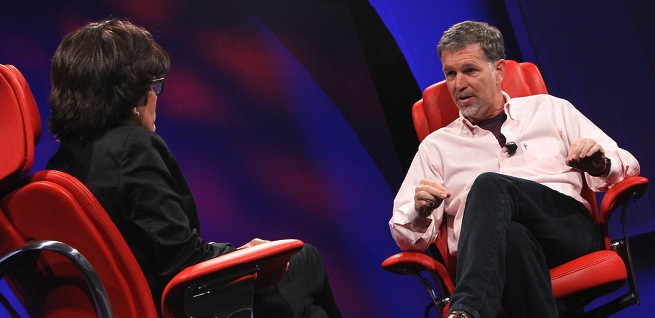Want smarter insights in your inbox? Sign up for our weekly newsletters to get only what matters to enterprise AI, data, and security leaders. Subscribe Now

Netflix released a new 11-page document that outlines the company’s long-term outlook on television — and more importantly, who will come out as winners.
The outlook document comes after the company’s successful 2013 first quarter earnings report, which saw Netflix bring in over $1 billion in revenue and a record 33 million subscribers. The document doesn’t really provide any new information, but it does shine some light on how Netflix is helping to revolutionize the business of streaming video.
We’ve outlined some of the more interesting bits below, but you can read the full document here.
The future of TV
Traditional TV viewing is dying and will eventually be replaced by Internet TV apps, the company outlines in the document. A variety of causes are behind this, including faster Internet speeds and a desire to stream higher-resolution video.
“Eventually, as linear TV is viewed less, the spectrum it now uses on cable and fiber will be reallocated to expanding data transmission. Satellite TV subscribers will be fewer, and mostly be in places where high-speed Internet (cable or fiber) is not available. The importance of high-speed Internet will increase.”
Spending
Netflix is spending about $350 million annually to maintain and improve its streaming service. This includes pushing the Netflix service across several platforms and devices, improving the user interface, monitoring performance, etc. That’s a pretty hefty sum, but it pales in comparison to the company’s content budget.
Netflix’s vast content library of movies and TV shows costs about $2 billion per year. The bulk of that money goes to licensing deals, such as the agreement Netflix made with Disney back in December. A very small portion of content spending goes to exclusive original content, such as House of Cards, Hemlock Grove, Arrested Development, and Orange is the New Black.
Netflix’s content
The company also plans to limit its content to shows that have long-term value (e.g. shows you can re-watch often) and shows that are in high demand. Netflix won’t always have the most complete library of content, but that’s not necessarily a bad thing.
“As we’ve gained experience, we’ve realized that the 20th documentary about the financial crisis will mostly just take away viewing from the other 19 such docs, and instead of trying to have everything, we should strive to have the best in each category. As such, we are actively curating our service rather than carrying as many titles as we can.”
Netflix also reiterated why it’s not interested in content that deals with current affairs, reality television, or sports. It has a strong commitment to scripted stories and documentaries. This could be part of why the company is choosing not to renew its licensing deal with Viacom but does want to strike separate deals to bring select shows to the Netflix library.
Thoughts on competition
“We don’t and can’t compete on breadth with Comcast, Sky, Amazon, Apple, Microsoft, Sony, or Google. For us to be hugely successful we have to be a focused passion brand. Starbucks, not 7-Eleven. Southwest, not United. HBO, not Dish.”
More specifically, competing with HBO, Hulu, and Amazon
Netflix estimates that it will eventually grow its subscriber base to be about two to three times the size of HBO. That means the Netflix of the future will have 60 million to 90 million subscribers. That doesn’t mean this will happen overnight. It also views services like Amazon Prime and Hulu as secondary competitors that won’t be able to offer the scope of content that Netflix can at a comparable experience.
“Behind HBO would come Amazon/Lovefilm/Prime, Hulu, Now TV, and many cable and broadcast networks in various territories. Amazon in particular is spending heavily and commissioning its own original programming, presumably because they see the same exciting big picture for Internet TV that we do. Many consumers will subscribe to multiple services if they each have unique compelling content. Success relative to these competitors-for-content would be us having substantially larger revenue and therefore sustainable increasing content, tech and marketing spending, leading to further growth, and a virtuous cycle.”

